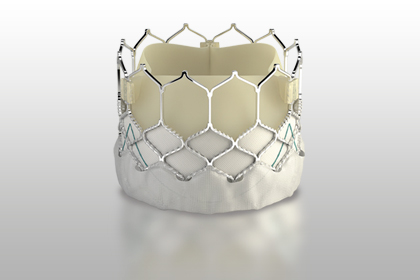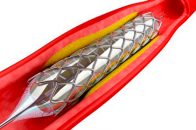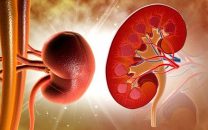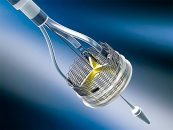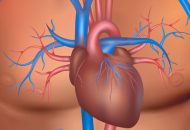Transcatheter aortic valve replacement (TAVR) was developed as a strategy to treat non-surgical aortic stenosis, and was later expanded to elderly patients at intermediate risk, because of increased operator experience (overcoming the learning curve) and improved devices. The present study presents the one year outcomes of the SOURCE 3 trial, the multicenter European registry of the…
New Study Confirms TAVR Durability at 5 Years
The ADVANCE study was designed to evaluate the safety and effectiveness of transcatheter aortic valve replacement (TAVR) with self-expanding prosthesis CoreValve in “real world” patients with symptomatic, severe aortic stenosis at high surgical risk. Patients were enrolled from 44 experimental centers in 12 countries; treatment approach and choice of anaesthesia were determined by the local Heart Team.…
2.0-mm DES for Very Small Vessels: Are They Viable?
The reference vessel diameter is a fundamental factor for restenosis after coronary angioplasty even with drug-eluting stents. The smallest sized stents available are 2.25 mm in diameter, but even smaller vessels can be symptomatic. This was a prospective multicenter trial of the Resolute Onyx 2.0-mm zotarolimus-eluting stent. The primary endpoint was target lesion failure. Read also: “Effects…
Effects of Cerebral Radiation on Interventional Cardiologists
In recent years, there has been a growing concern about the occupational hazard for interventional cardiologists who have high and unprecedented levels of ionizing radiation exposure. microRNAs are a class of short and highly conserved non-coding RNA molecules (about 22 nucleotides) that become altered (dysregulated) in many diseases. Read also: “Nearly half of interventional cardiologists may…
Excellent Outcomes for the First Sirolimus Eluting Balloon Tested on Instent Restesosis
Much has been done since studies on conventional balloon angioplasty for BMS instent restenosis showed over 40% new revascularization. Drug eluting stents, aimed at improving this problem, have never achieved 0% restenosis, which is why technologies such as paclitaxel coated balloons have been developed, with reasonable efficacy (8% to 10% reinterventions rate for BMS restenosis and 17% to 23%…
An Important Study Shows That Renal Function Must Be Cared for in TAVR
Courtesy of Dr. Carlos Fava. The presence of renal dysfunction in the “real world” is over 25% in patients who undergo transcatheter aortic valve implantation (TAVI). The evolution of this disease among patients who are subjected to a replacement is well known, but evidence for patients who undergo TAVI is still limited, particularly for those who…
Bioresorbable Scaffolds Must Not Be Chosen Over Current DES
Although there are 4 approved bioresorbable scaffolds (BRS) in Europe, experts suggest that current drug-eluting stents (DES) are the best option for coronary angioplasty. These new guidelines jointly published by the European Society of Cardiology (ESC) and the Association of Percutaneous Cardiovascular Interventions (EAPCI) are an update on the use of BRS in clinical practice…
REPRISE III: Need for Pacemaker and Paravalvular Leak with Lotus
A recent presentation at London Valves took a closer look at the REPRISE III trial as regards two points that generated much discussion, such as need for a pacemaker and paravalvular leak. REPRISE III had previously demonstrated that the Lotus is noninferior to first-generation CoreValve and Evolut R in terms of safety. Additionally, it proved to be superior…
Impella Improves Safety in High Risk Unprotected Left Main PCI
Courtesy of Dr. Carlos Fava. The incidence of unprotected left main severe stenosis ranges between 4 and 8%, and it’s mostly associated with multivessel disease. The use of left ventricular support devices in high risk unprotected left main PCI is on the rise, but not much information available in this regard. Read also: “Prior assistance…
Small Annulus: Should We Start Choosing the Valve?
Courtesy of Dr. Carlos Fava. A small annulus in patients with Severe Aortic Stenosis is a real challenge, since it is associated with post-surgical prosthesis patient mismatch (PPM), which negatively affects prosthesis duration and evolution. TAVR has become a good alternative strategy, with better hemodynamic profile and lower PPM incidence in this group. The present study included 246…
